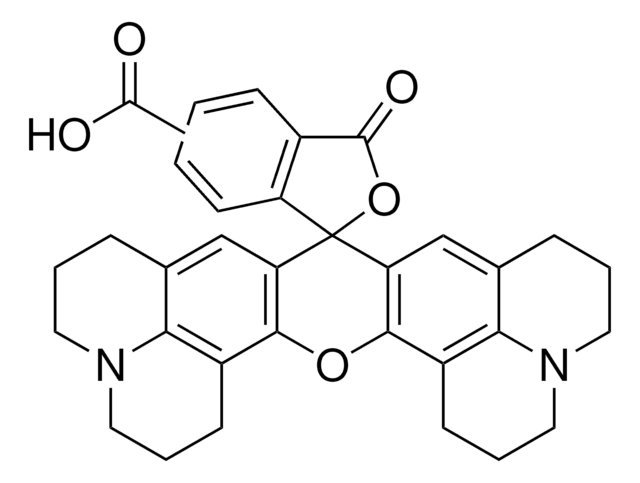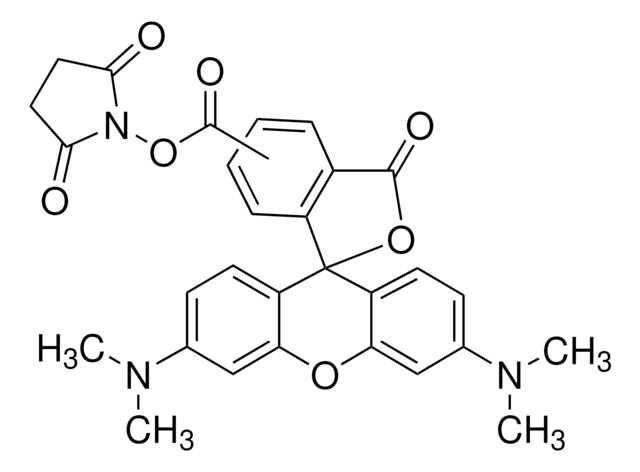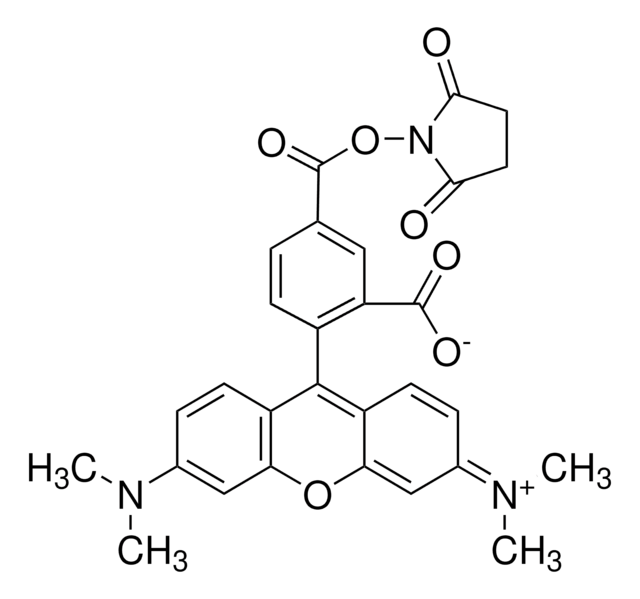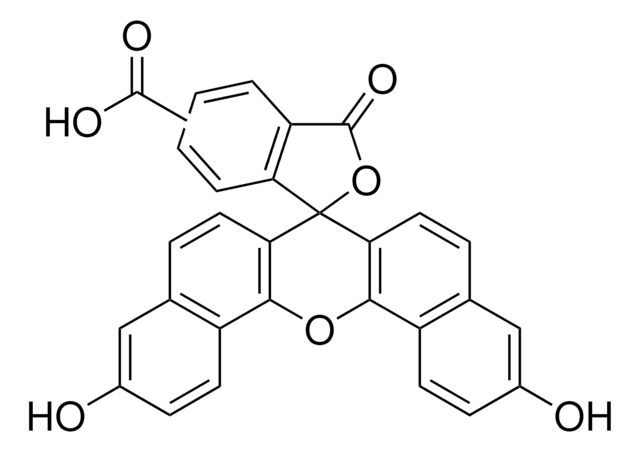Key Documents
41969
5-Carboxy-X-rhodamine N-succinimidyl ester
BioReagent, suitable for fluorescence
About This Item
Polecane produkty
linia produktu
BioReagent
Poziom jakości
Postać
powder
rozpuszczalność
DMF: soluble
acetonitrile: soluble
fluorescencja
λex 575 nm; λem 600 nm in 0.1 M phosphate pH 7.0
przydatność
suitable for fluorescence
temp. przechowywania
−20°C
ciąg SMILES
[O-]C(=O)c1cc(ccc1-c2c3cc4CCCN5CCCc(c45)c3[o+]c6c7CCCN8CCCc(cc26)c78)C(=O)ON9C(=O)CCC9=O
InChI
1S/C37H33N3O7/c41-29-11-12-30(42)40(29)47-37(45)22-9-10-23(26(19-22)36(43)44)31-27-17-20-5-1-13-38-15-3-7-24(32(20)38)34(27)46-35-25-8-4-16-39-14-2-6-21(33(25)39)18-28(31)35/h9-10,17-19H,1-8,11-16H2
Klucz InChI
BTTBJYLMDASSAS-UHFFFAOYSA-N
Zastosowanie
Inne uwagi
Hasło ostrzegawcze
Warning
Zwroty wskazujące rodzaj zagrożenia
Zwroty wskazujące środki ostrożności
Klasyfikacja zagrożeń
Eye Irrit. 2 - Skin Irrit. 2 - STOT SE 3
Organy docelowe
Respiratory system
Kod klasy składowania
11 - Combustible Solids
Klasa zagrożenia wodnego (WGK)
WGK 3
Temperatura zapłonu (°F)
Not applicable
Temperatura zapłonu (°C)
Not applicable
Środki ochrony indywidualnej
dust mask type N95 (US), Eyeshields, Gloves
Certyfikaty analizy (CoA)
Poszukaj Certyfikaty analizy (CoA), wpisując numer partii/serii produktów. Numery serii i partii można znaleźć na etykiecie produktu po słowach „seria” lub „partia”.
Masz już ten produkt?
Dokumenty związane z niedawno zakupionymi produktami zostały zamieszczone w Bibliotece dokumentów.
Produkty
Fluorescent Labeling of Peptides
Pochodne chromogeniczne i fluorogeniczne są nieocenionymi narzędziami w biochemii, mającymi liczne zastosowania w enzymologii, chemii białek, immunologii i histochemii.
Nasz zespół naukowców ma doświadczenie we wszystkich obszarach badań, w tym w naukach przyrodniczych, materiałoznawstwie, syntezie chemicznej, chromatografii, analityce i wielu innych dziedzinach.
Skontaktuj się z zespołem ds. pomocy technicznej








